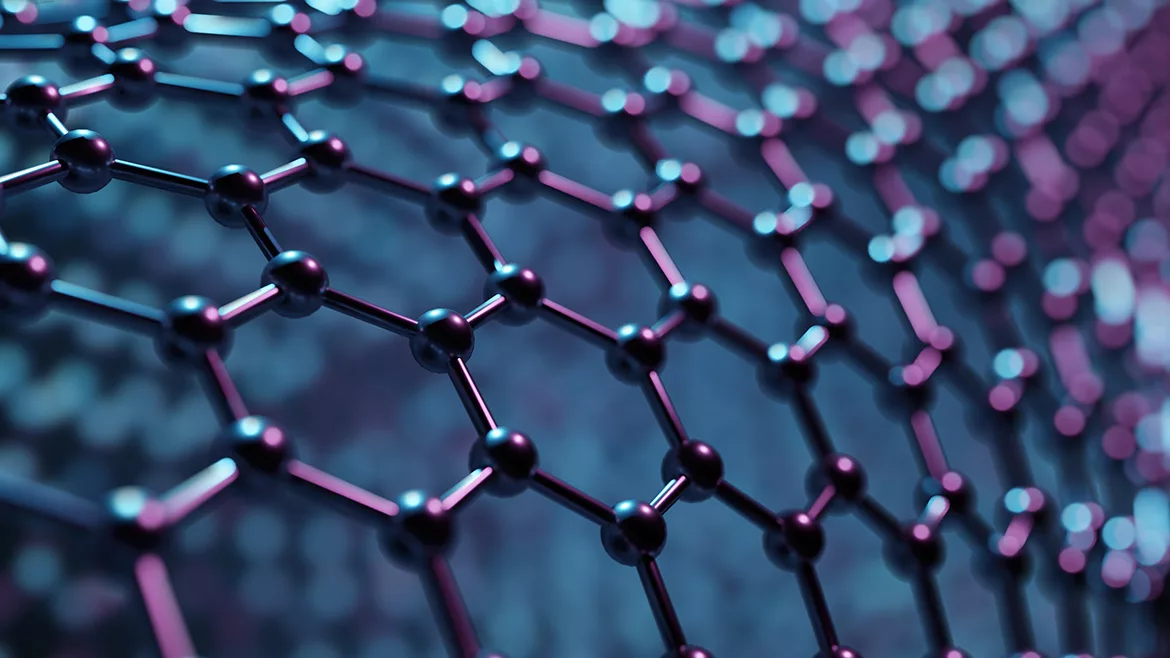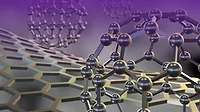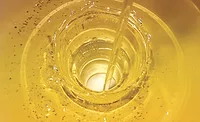Graphene Unlocks Sustainable Coatings Potential

Credit: vchal / iStock via Getty Images Plus
Since its discovery, graphene – an atom-thin sheet of carbon – has captivated researchers and businesses alike with its extraordinary properties: exceptional strength, electrical and thermal conductivity, flexibility, and chemical resistance. Currently, the graphene market is projected to grow by 35% by 2030, demonstrating significant potential across multiple industries.
One sector poised to benefit substantially from this innovation is the coatings industry. In 2024, the global market for graphene coatings was valued at approximately USD 167.62 million, with an expected growth rate of 25.3% by 2030. From protective paints to advanced industrial finishes, graphene-based coatings are set to revolutionize performance, durability, and sustainability – key factors in promoting a circular economy.
Unmatched Power and Performance: Graphene’s Game-Changing Qualities
Graphene is often described as the ultimate two-dimensional material. In coatings, it’s typically used in the form of small stacks of graphene sheets. When incorporated into formulations, these sheet-like structures enable a host of beneficial properties that address many challenges faced by the coatings industry, including issues of durability, maintenance frequency, and environmental impact.
Graphene’s inherent strength and lubricious nature help coatings resist wear and abrasion, meaning less frequent maintenance, reduced repair costs, and longer product lifespans. Additionally, graphene dissipates heat, making it ideal for industrial machinery, automotive components, and aerospace applications where overheating can lead to decreased performance or even failure. Graphene-infused coatings help regulate temperatures and enhance energy efficiency.
In applications where black color is acceptable or desired, graphene-infused coatings can be leveraged to absorb and spread heat effectively, further extending equipment life. Thanks to its excellent conductivity, graphene in coatings can prevent static buildup and provide electromagnetic interference (EMI) shielding, particularly important for sensitive electronics and electric vehicles.
Fortified Protection: Battling Corrosion and Chemicals
Corrosion is a costly, worldwide problem, contributing to a financial burden of roughly USD 2.5 trillion annually. It impacts numerous industries, from infrastructure to transportation and manufacturing. By adding sheet-like graphene stacks to coating formulas, manufacturers introduce a “tortuous path” for water, oxygen, and other corrosive agents. Graphene’s dense and impermeable structure creates a formidable barrier, significantly reducing corrosion risks.
This makes graphene-infused coatings an excellent choice for protecting metal surfaces in harsh environments, such as offshore structures, pipelines, and marine vessels. Graphene-based coatings support longer asset lifespans, decreasing the need for replacement materials and contributing to resource efficiency.
The chemical stability of graphene enhances its resistance to acids, solvents, and other aggressive substances, making it beneficial for industrial equipment and storage tanks. Graphene coatings lower maintenance costs, improve safety, and ensure that equipment stays operational for longer periods, optimizing the utility of existing assets.
Driving Sustainability: How Graphene Coatings Are Shaping a Greener Future
As regulations and consumer expectations push the coatings industry toward more sustainable solutions, graphene offers a viable path. Its unique attributes enable thinner yet more effective coatings, reducing both raw materials use and overall environmental footprint.
Graphene’s ability to reinforce polymers at ultra-low loadings allows for thinner and more effective coatings, which reduces material consumption. For example, where conventional coatings might require a 50–100 µm film thickness to achieve adequate barrier protection, graphene-enhanced coatings can deliver the same—or better—performance at just 15–30 µm. This represents a reduction in material usage of up to 70%, significantly cutting raw material costs. Additionally, the leaner formulation means fewer emissions associated with production, packaging, and transport, supporting more sustainable and cost-efficient supply chains.
Innovative water-based graphene coatings are also emerging, eliminating the need for solvent-heavy options. These formulations align with increasing environmental regulations worldwide, positioning graphene as a crucial material for driving progress across industries.
Industry-Specific Applications
In the automotive and aerospace industries, graphene coatings enhance scratch resistance, thermal management, and potentially lighter weight – all contributing to increased fuel efficiency. The anti-corrosion properties of graphene are particularly valuable for aerospace structures that are exposed to extreme conditions, leading to longer service lives and reduced resource consumption.
Solar panels and wind turbine blades treated with graphene coatings can resist wear and harsh conditions, improving efficiency and extending operational lifespans. Moreover, in construction and infrastructure, bridges, buildings, and pipelines coated with graphene experience enhanced weather resistance properties and prolonged service life, reducing maintenance demands and material waste.
Additionally, graphene’s anti-corrosive and anti-fouling properties benefit ships, oil rigs, and other offshore assets, lowering biofouling and cutting fuel costs – key advantages for an industry grappling with environmental pressures and high operational expenses.
The Road Ahead
Despite its transformative potential, integrating graphene into commercial coatings presents several challenges. High production costs, scalability issues, and the need for specialized dispersion techniques have slowed widespread adoption. However, ongoing research and development are actively addressing these hurdles.
One innovative approach to overcoming obstacles in graphene manufacturing involves harnessing controlled explosions of carbon-rich materials to create nanosized graphene powders at large scales. This method produces a superior type of high-purity, high-performance graphene, compared to those produced with traditional methods.
This advancement significantly reduces the need for expensive chemical processing or complex machinery, enabling graphene production at large scales. Improving both purity and performance, this novel production method is paving the way for the widespread use of graphene in advanced coating and other industrial applications.
Collaboration across academia, industry, and governments is also fostering innovation and accelerating commercialization. As production costs decline and manufacturing processes mature, graphene coatings are set to become more accessible, reshaping the market landscape.
The global coatings industry is on the verge of a significant shift, with graphene at the forefront. Its unrivaled strength, conductivity, and chemical resistance open the door to coatings that are more durable, longer lasting, and environmentally friendly. From infrastructure and transportation to electronics and renewable energy, the impact of graphene-based coatings promises to be vast and far-reaching.
As production challenges subside and technological breakthroughs continue, the question is no longer if graphene will disrupt the coating industry, but when. The companies that prioritize research and development of graphene-enhanced formulations today are poised to gain a strong competitive advantage – ushering in a new era of performance and sustainability in the coatings industry.
Looking for a reprint of this article?
From high-res PDFs to custom plaques, order your copy today!









